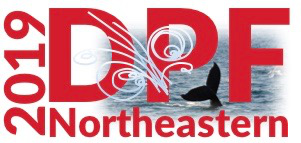Speaker
Description
Designed to push forward our understanding of fundamental physics at the energy frontier, the Compact Muon Solenoid (CMS) detector is one of the two general-purpose particle detectors at the LHC. Collisions take place within CMS at approximately 40 MHz, producing much more data than can be recorded or stored for future analysis. However, only a small fraction of the collisions contain events likely to be associated with new or interesting phenomena. In order to select as many of these potentially interesting events as possible while reducing the rate to a more manageable 1 kHz, CMS employs a two-tiered trigger system consisting of a hardware based Level-1 (L1) Trigger and a software based High Level Trigger (HLT). Monitoring the output rates of the trigger paths is of key importance to determining the overall performance of the trigger system; these rates are also very sensitive to the performance of all aspects of the detector, so rate monitoring can often provide the first indication of issues that arise within the various sub-detectors of CMS as well. This presentation will discuss the CMS trigger system and describe the software tools developed and used by CMS to characterize, monitor, and visualize the L1 and HLT trigger rates.




